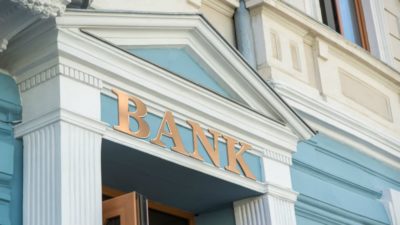If you have children, you are probably hoping that they will one day attend post-secondary school. Hearing that a child has made it into their dream university can be one of your proudest moments. But if you’re not prepared, it can also be one of your most financially stressful moments.
Are you maximizing the efficiency of your education saving for your children? Read on to find out more.
There is free money on the table
The best resource you have to save for your child’s education is the Retirement Education Savings Plan (RESP). You can contribute up to $50,000 per child, with the government adding $500 per year using the Canadian Education Savings Grant (CESG), up to a total of $7,200 received.
If you’re a lower income family, each child can receive an additional $2,000 through the Canada Learning Bonds (CLB).
Your child’s RESP is the most efficient way of saving for his or her education. It is better than the Tax-Free Savings Account (TFSA), and the Registered Retirement Savings Plan (RRSP) because there is free money given by the government.
Receiving extra money from the government for your child’s education is a rare gift, and there’s the added benefit of the money growing tax-free within the account.
One thing to be aware of, however, is that the grants from the CESG and CLB will be taxable income once you withdraw it. But the beauty of it is the money will be taxable under your child’s income. Because they are students, they likely won’t have a lot of income so they will have little to no tax to pay.
The magic number
Try to contribute $2,500 per year to max out the grants for your RESP; $2,500 is the magic number because it’s the minimum input for maximized benefits.
Your RESP can hold many different types of investments. Dividend stock is a great option to hold since everything accumulates tax-free.
Let’s use the Royal Bank of Canada (TSX:RY)(NYSE:RY) as an example. As a blue chip, rock-steady performer with a $107 billion market capitalization and an ATM or branch on every street corner, every Canadian knows who RBC is.
RBC’s dividend yield is 4.2% currently. Let’s use this yield as our conservative estimate for return in the RESP.
Over the past 15 years, including stock appreciation and dividends reinvested, RBC has averaged a 10.49% total return per year. We can use this as our aggressive estimate for return in the RESP.
In this example, the assumption is that you will contribute $2,500 per year, receive the maximum amount of grantrecomms at $7,200, start when the baby is zero years of age, and are a higher-income family so you don’t receive the CSB:
| Age | RESP Contributions | CESG (Grant ) | Total Contributed | Total RESP (Conservative 4.2% Return) | Total RESP (Aggressive 10.49% Return) |
| 0 | $ 2,500 | $ 500 | $ 3,000 | $ 3,000 | $ 3,000 |
| 1 | $ 2,500 | $ 500 | $ 3,000 | $ 6,126 | $ 6,315 |
| 2 | $ 2,500 | $ 500 | $ 3,000 | $ 9,383 | $ 9,977 |
| 3 | $ 2,500 | $ 500 | $ 3,000 | $ 12,777 | $ 14,024 |
| 4 | $ 2,500 | $ 500 | $ 3,000 | $ 16,314 | $ 18,495 |
| 5 | $ 2,500 | $ 500 | $ 3,000 | $ 19,999 | $ 23,435 |
| 6 | $ 2,500 | $ 500 | $ 3,000 | $ 23,839 | $ 28,893 |
| 7 | $ 2,500 | $ 500 | $ 3,000 | $ 27,840 | $ 34,924 |
| 8 | $ 2,500 | $ 500 | $ 3,000 | $ 32,010 | $ 41,588 |
| 9 | $ 2,500 | $ 500 | $ 3,000 | $ 36,354 | $ 48,950 |
| 10 | $ 2,500 | $ 500 | $ 3,000 | $ 40,881 | $ 57,085 |
| 11 | $ 2,500 | $ 500 | $ 3,000 | $ 45,598 | $ 66,073 |
| 12 | $ 2,500 | $ 500 | $ 3,000 | $ 50,513 | $ 76,004 |
| 13 | $ 2,500 | $ 500 | $ 3,000 | $ 55,635 | $ 86,977 |
| 14 | $ 2,500 | $ 200 | $ 2,700 | $ 60,671 | $ 98,801 |
| 15 | $ 2,500 | $ – | $ 2,500 | $ 65,720 | $ 111,665 |
| 16 | $ 2,500 | $ – | $ 2,500 | $ 70,980 | $ 125,879 |
| 17 | $ 2,500 | $ – | $ 2,500 | $ 76,461 | $ 141,584 |
As you can see, the power of contributing at an early age is evident here, with the RESP growing to $76,461 in the conservative estimate and a whopping $141,584 in the aggressive view.
If you consider that only $45,000 of your own money was contributed to the RESP, you can see the amazing benefits of this program.
Final takeaways
You’ve now seen an example of what a good dividend stock like RBC held within your RESP can achieve. Investing in just one stock isn’t recommended, however; instead, you should spread your risk and invest in a portfolio of several stocks.
The most important part is to start early and contribute what you can, even if it isn’t the full $2,500 per year. Your child will thank you for it when they’re older.









